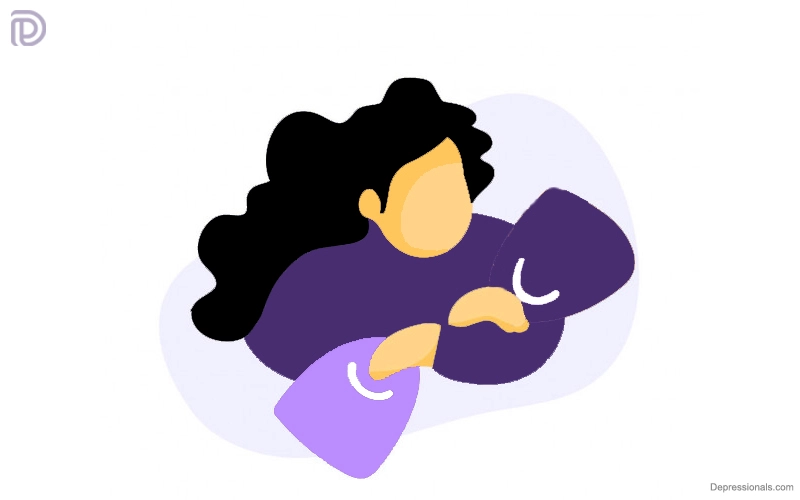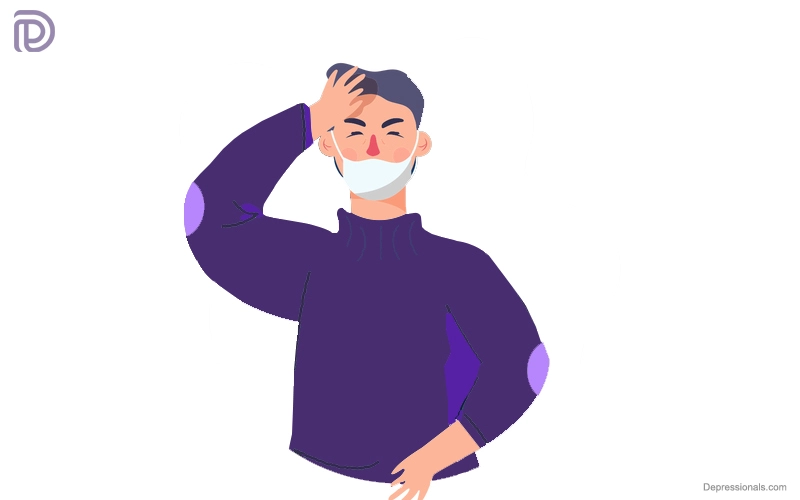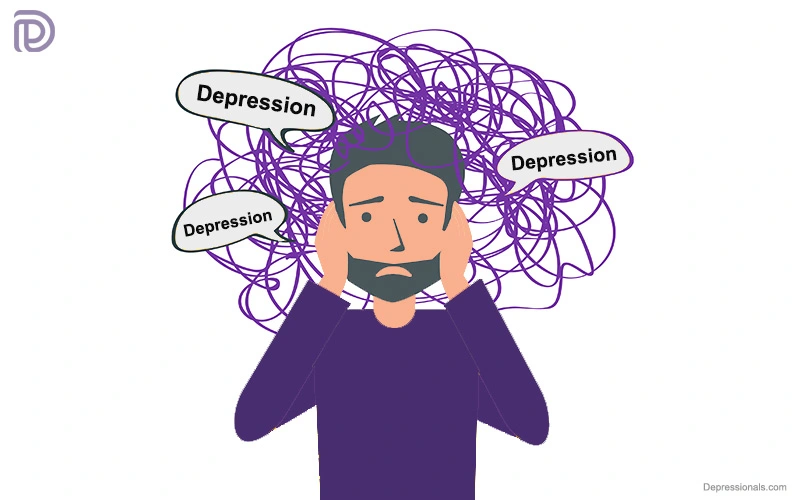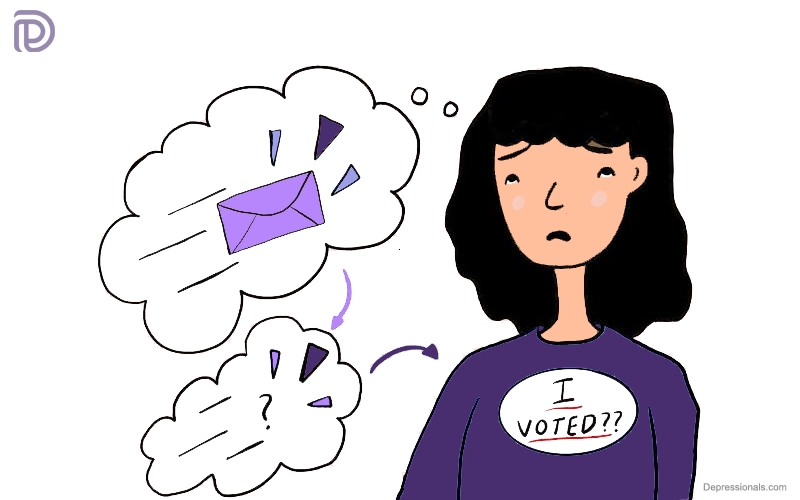What is bipolar II disorder?
Bipolar II disorder (also known as bipolar two) affects about 2% of the population. Moods in bipolar II disorder cycle between highs and lows over time, similar to those in bipolar I.
When bipolar II disorder is present, the ‘up’ moods never reach the full-blown mania stage. Bipolar II disorder is characterized by less intense elevated moods called hypomanic episodes.
Hypomania occurs at least once in the life of a bipolar II patient. The majority of people with bipolar II disorder have episodes of depression more often than not. It is from this standpoint that “manic depression” was coined.
The majority of people with bipolar II disorder lead relatively normal lives between episodes of hypomania and depression.
Read: Situational Depression
Who is at risk for bipolar II disorder?
The disorder can affect anyone. Bipolar disorder affects approximately 2.5% of the U.S. population – nearly 6 million people.
A person with bipolar disorder usually shows symptoms in their teens or early twenties. Most people who suffer from bipolar 2 disorder develop it before the age of 50. Bipolar patients are at a higher risk if they have immediate family members with the disorder.
What are the symptoms of bipolar II disorder?

Hypomania is characterized by either high mood (feeling “high”) or irritability. During hypomanic episodes, you may experience:
- Jumping from one idea to another suddenly
- Being overconfident
- Rapid, “pressured” (uninterrupted) and loud speech
- An increase in energy decreased sleep needs and hyperactivity
It is often pleasant to spend time with individuals who have hypomanic episodes. It is common for them to appear as the life of the party, making jokes, showing a keen interest in others and activities, and spreading a positive attitude.
You might wonder, why is that such a bad thing? Behavioral irregularities may also result from hypomania. The intensity of a mania (bipolar I disorder) may eventually result from hypomanic episodes.
During mania, people are more likely to spend money that they do not have, engage in sexual activity with people they normally would not, and engage in other risky behaviors with potentially dangerous consequences.
In most cases of bipolar II disorder, the majority of time is spent dealing with depressive symptoms rather than hypomania. Hypomania can subside early, or depression can set in much later. Hypomania and depression have a tendency to recur, whereas some individuals have long periods of normal mood between episodes.
Read: Double Depression Disorder
Various people suffer from hypomania for countless reasons. Symptoms usually persist for several weeks to several months.
When someone has bipolar 2 disorder, depressive episodes are similar to those of “regular” clinical depression, with depressed moods, feelings of guilt and worthlessness and thoughts of suicide. Bipolar disorder can cause depressive symptoms to last for weeks, months, or even years.
Related: Loneliness and Depression
What are the treatments for bipolar II disorder?
Hypomania often comes in the form of unrelenting optimism and happiness. Hypomania often goes unnoticed if it does not cause unhealthy behavior, and therefore remains untreated. By contrast, full mania leads to impaired functioning and requires medications and possibly hospitalization as treatment.
Over the long term, preventive medicines can level out moods in people with bipolar 2 disorder. Preventing hypomania and depressive episodes can help prevent the negative consequences.
Mood stabilizers
In bipolar disorder, lithium (Eskalith, Lithobid) is highly effective at reducing mood swings (particularly highs). The treatment of bipolar disorder with lithium has been around for more than 60 years. Lithium is best used as long-term treatment rather than a quick fix for hypomania onsets. To avoid side effects, patients need to monitor their blood levels of lithium and other tests (such as kidney and thyroid function).
Anti-seizure drug carbamazepine (Tegretol): This drug has been used for treating mania since the 1970s. A less well-established benefit could be its ability to prevent future “highs” and “lows”. The liver must be periodically tested as well as the white blood cell count.
The FDA has approved lamotrigine (Lamictal) for the maintenance treatment of adults with bipolar disorder. Studies have shown that it can delay the onset of mood episodes of depression, mania, hypomania (a mild form of mania), and mixed episodes in people receiving standard therapy. Lows can be prevented by this strategy.
Anti-seizure drug Valproate (Depakote) helps stabilize moods as well. There are several advantages to using this drug over lithium, like its rapid onset of action and the ability to use it “off-label” for keeping the moods stable.
Occasionally, other antiseizure medications are recommended as “experimental” (less-proven) treatments for people with bipolar disorder, such as oxcarbazepine (Trileptal).
Read: How to Get Out of a Depressive Episode
Antipsychotics
Hypomania has no psychotic component and does not impair functioning by definition. Antipsychotic drugs, such as aripiprazole (Abilify), asenapine (Saphris), cariprazine (Vraylar), quetiapine (Seroquel), olanzapine (Zyprexa), risperidone (Risperdal) and ziprasidone (Geodon), and others, are nevertheless sometimes used in hypomania and some (notably, Seroquel) are used for depression in bipolar II disorder.
Benzodiazepines
There are several drugs in this class, including alprazolam (Xanax), diazepam (Valium), and lorazepam (Ativan). Hypomania symptoms such as insomnia or agitation can be controlled with them in the short term.
Antidepressants
Bipolar II depression can only be treated with Seroquel and Seroquel XR, the only FDA-approved medications. Taking antidepressants like fluoxetine (Prozac), paroxetine (Paxil), and sertraline (Zoloft), which are less likely to cause hypomania when used in bipolar II depression, may also help with bipolar 2 depression. You may also benefit from cognitive-behavioral therapy.
For relapse prevention, some doctors suggest ongoing treatment with medications since bipolar II disorder usually involves recurrent episodes.
Read: How Loneliness Affects Mental Health
Can bipolar II disorder be prevented?
We do not fully understand the causes of bipolar disorder. The cause of bipolar II disorder is not completely understood.
When bipolar disorder develops, there is a possibility of reducing the risk of future episodes of hypomania or depression. Psychotherapy sessions with a psychologist or social worker, when combined with medication, can help stabilize moods, reducing hospitalizations, and contributing to overall well-being.
Psychology can assist individuals in recognizing the warning signs of relapse before they become serious, and also assist them in taking their medications correctly.
Contact: Mental Help Resources
How is bipolar II disorder different from other types of bipolar disorder?
Mania is a severe state of abnormally elevated mood and erratic behavior characterized by full mania in people with bipolar I disorder. Symptoms of manic depression can cause major disruptions in life, causing legal or personal difficulties.
Mania never occurs in bipolar disorder type II. In bipolar II, hyper mania is a milder form of mood elevation. Although bipolar II disorder is often characterized by depressive episodes which last longer and maybe even more severe than bipolar I disorder. This means bipolar II disorder isn’t merely a milder version of bipolar disorder.






A lot of thanks for all your hard work on this blog and alo try to [url=https://www.kizi10.org] play kizi10 games [/url]. Ellie takes pleasure in setting aside time for investigations and it’s really simple to grasp why. My spouse and i hear all concerning the compelling method you deliver powerful items on this website and as well strongly encourage participation from website visitors on the area plus my princess is undoubtedly being taught so much.
Hai, saya ingin tahu harga Anda.
Thank you for some other informative site. The place else may I get that type of information written in such an ideal method? I’ve a venture that I am just now working on, and I have been at the glance out for such information.
I apologise, I can help nothing, but it is assured, that to you will help to find the correct decision.
Asking questions are truly nice thing if you are not understanding something entirely, however this piece of writing offers fastidious understanding yet.
We are a bunch of volunteers and starting a brand new scheme in our community. Your web site offered us with valuable info to work on. You have done an impressive job and our entire group will be grateful to you.
The information you provided is extremely helpful
The information you provided in this post is extremely helpful. I appreciate your kind words sincerely
Very Informative
Appreciating the time and effort you put into your website and in depth information you offer. It’s awesome to come across a blog every once in a while that isn’t the same outdated rehashed material. Excellent read! I’ve saved your site and I’m adding your RSS feeds to my Google account.
I like this site very much.
I do consider all of the ideas you have offered on your
post. They’re very convincing and can certainly work. Still, the posts are very quick
for novices. May you please extend them a bit from next
time? Thanks for the post.
Good day! Do you use Twitter? I’d like to follow you if that would be okay. I’m undoubtedly enjoying your blog and look forward to new posts.